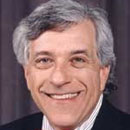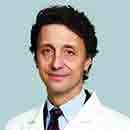Beaver survey aims to show the urban benefits of Chicago's 'ecosystem engineers'
Published in Lifestyles
CHICAGO — As the boat zipped down the Chicago River on a nippy November morning, Sammie Clark stood up and pointed at a creature swimming in the water, its brown fur slick and its head bobbing just above the surface. It kept close to the edge, a sheet metal wall where the riverbank used to be.
“That’s either a muskrat or a beaver,” she said. “I’ve yet to see a beaver with my own eyes on the river.”
Clark grabbed a pair of binoculars and, delighted, realized her luck had turned.
“It’s a beaver! It is!” she yelled.
Every night for the last few weeks, the wildlife biologist has checked the live feeds of trail cameras she’s installed along stretches of the river’s two branches hoping to spot the largest living rodent in North America, weighing anywhere from 25 to 90 pounds.
“I wonder where that little guy was heading,” said Stephen Meyer, who was driving the boat, as he revved the engine and watched the beaver make its way north from across Ping Tom Memorial Park in Chinatown. Beavers are mostly active at night, but as they prepare for winter in the late fall they might be seen during the day as well.
Meyer is a volunteer coordinator at the local nonprofit Urban Rivers, which is funding and lending resources such as the boat to Clark, who has been contracted as an independent researcher for a two-year study in Chicago — the first of its kind to try to understand beaver populations in such an urbanized location.
“No studies have been done here and, as far as I have found in the literature, this will be the most urban environment that beavers have been surveyed and studied in,” Clark said. “The only other place was maybe Seattle, but the (human) population of that area was still significantly less than the population density of Chicago.”
Other urban areas where beaver populations have been studied include Saskatoon, Saskatchewan, and Flanders in Belgium. But, for the most part, beaver research is done in wild, remote locations with little to no human presence. Her only other sighting was in Yellowstone National Park — “the epitome of nature.”
So now in Chicago, the third most populous U.S. city, Clark has set out to learn: “How much usable space do the beavers even have? And how do we live alongside wildlife?”
On the recent outing, Clark was looking for signs of beaver activity such as felled trees or trunks with teeth marks, piles of branches and debris known as lodges on the riverbank, and scent mounds that the animals use to mark their territory.
In a short pit stop before getting to the study survey area, Meyer approached an artificial floating garden — one of many that Urban Rivers is installing along the river to restore native wetland habitats, which provide food and shelter for wildlife, as well as natural spaces for humans.
This specific island was commissioned from Urban Rivers by the real estate company Prologis right off a South Branch property as part of a commitment to sustainable development by including critical habitat in the still industrialized area. Further up the river, along the North Branch Canal and east of Goose Island, the nonprofit has led a restoration project called the Wild Mile, where floating gardens mimic natural wetland habitat like the ones that might have been found in the city before it was developed.
Beavers were essentially eliminated from Illinois by the early 1900s after decades of unrestricted trapping practices but reintroduced between the late 1920s and early 1950s. They are common throughout the state nowadays. This comeback mirrors the population’s nationwide recovery of 10 to 15 million from as many as 400 million before the arrival of European settlers.
But wetland habitats have been significantly reduced in the country since then — 90% of Illinois’ original wetlands have been destroyed by urban development and agriculture — so restoring these natural habitats is key to sustaining beaver population numbers, experts say.
Clark put on waders and hopped on the island by the Prologis property to look for scent mounds, which beavers make out of mud and mark with a liquid substance they excrete that smells almost like vanilla. As she stood in between native vegetation on the floating garden, she caught a whiff of something in the air.
“I was convincing myself I smelled something sweet over here, but I think it’s just a plant,” she said after a while.
Her initial instinct was right, though: Hours later, Meyer’s trail camera caught an image of a beaver actively marking that spot.
The goal of Clark’s research is twofold: first, to compare how beavers are using these floating wetlands and the river’s natural edge; second, to see if beavers spend more time within a few miles of the wetlands versus elsewhere where there are none of these established habitats.
Sometimes in urban areas, the presence of beavers can be seen as a nuisance and they can be misunderstood as pests — especially when they help themselves to tree parts that they use to build dams, interfering with human activity and notions of aesthetic landscaping. In some instances, the animals are even trapped and drowned as municipalities try to get rid of them.
But their building abilities have earned these ingenious rodents the title of “ecosystem engineers,” because they create habitats for other species. For example, other animals such as fish, birds, even muskrats and river otters sometimes move into abandoned beaver dens, lodges and dams; sheltersuch as this is increasingly important as urban wildlife is threatened as climate change warms cities where vegetation is scarce and buildings trap heat.
“In that way, they’re very helpful to the other wildlife here in Chicago,” Clark said.
Their presence can also have rippling beneficial effects across entire ecosystems: Their structures can improve water quality by filtering pollution from industrial corridors and agricultural lands, mitigate climate impacts such as flooding and drought by accumulating water and releasing it gradually, and the resulting wet, saturated soils can store carbon.
The large impact that beavers can have on an ecosystem and its landscape makes them a “keystone species” that others rely and depend on.
Advancing south of Cermak Road, once the boat approached one of Clark’s designated areas of study — a roughly 1.5-mile radius — the loud clanging of trucks and the hum of traffic intensified. Meyer steered the boat into a slip between two power plants.
Clark put on some waders, hopping off the boat and onto a steep bank right below where trucks were parked. She inspected a maple tree, its leaves a sunny shade of yellow, running her fingers over the ridges that beaver teeth marks created on its branches.
“Just goes to show they are using every nook and cranny that they can, because this is a very industrial part,” Clark said.
Past the Loomis Street Bridge, Meyer climbed up a ladder to count and photograph more than a dozen felled trees, including oaks and trees of heaven, an invasive species also known as the Chinese sumac.
“I was really happy to see beavers chomping at that,” Meyer said.
The group then crossed to the other side of the river, across from Park 571 and the infamous Bubbly Creek — a fork on the South Branch known as such because local meatpacking businesses once dumped animal carcasses there, which would decompose and release bubbling gases to the water’s surface.
Despite decades of environmental pollution, advocates say Bubbly Creek has remained a resilient ecosystem evidenced by its thriving wildlife including beavers, snapping turtles, waterfowl and songbirds.
“If I was a beaver, I would definitely live back here,” Meyer commented from the boat as Clark waded close to the bank, holding onto grass, roots and branches to keep her balance while she inspected chew marks on tree trunks.
Once on land next to the park’s boathouse, Clark inspected clusters of trees near a row of townhomes that beavers had clearly reached. Some stumps were gray and had likely been cut down for a while, others had branches recently chewed on and bit into.
“It’s like a graveyard,” Clark laughed.
While the scene might’ve been a bit grim, the bark shavings and the pencil-shaped trunks offered cartoonishly real and undeniable signs of beaver activity on the South Branch. And to Clark, it was evidence of the species thriving on the river, the kind of knowledge she hopes to collect and share and help Chicagoans feel more connected to their loveable aquatic neighbors.
“If you get to go to a place like the Wild Mile and see a beaver there, that could potentially be life-changing,” she said, “but also really impact people’s ideas about how much we affect animals and nature, and also how closely linked we still are — even though we’re in the city and we think that we don’t necessarily affect wildlife here, but we do.”
©2024 Chicago Tribune. Visit at chicagotribune.com. Distributed by Tribune Content Agency, LLC.































Comments